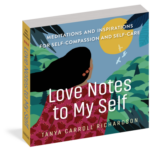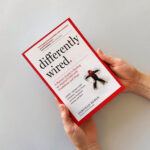Approach the new school year with an added dose of mindfulness, excerpted from Shonda Moralis’s Breathe, Mama, Breathe: 5-Minute Mindfulness for Busy Moms.
Buy the Book
Amazon | B&N | Indiebound | Workman
Mindfulness meditation builds increased awareness, calm, and an overall sense of well-being. Sri K. Pattabhi Jois, who brought Ashtanga yoga to the West, said that yoga is 99 percent practice and 1 percent theory. The same holds true for meditation. It’s vital that you prioritize and protect your five minutes of meditation practice every day.

When
Choose a time of day and make it a habit. Habits are most easily formed if we bookend them with other already-established habits; for example, waking in the morning, washing your face, sitting to meditate, and then enjoying your daily cup of tea or coffee. Experiment with the best time of day for you. I have found that early morning is the best time for me, before everyone in the house begins stirring. I also love how it sets the tone for my day. Others find that the kids’ nap time or bedtime is their best bet. As long as you can stay awake, what is most important is that it becomes part of your daily routine.
Where
As best you can, find a quiet place where you will not be interrupted. Set firm boundaries with yourself and your family that this is your time and should be interrupted only in case of emergency. When I’ve needed to practice in the middle of the day, I have, on occasion, resorted to sitting in my closet for a bit more peace. Of course, we cannot control all variables; the neighbor’s dog will bark, the phone will ring. Simply allow these sounds to become a part of your meditation.
Why (am I doing this again?)
There will certainly come a time when you ask yourself why you are taking these precious five minutes to sit and do nothing. Remind yourself that you are taking this time to nurture a healthy brain, much like eating a nutritious breakfast sustains your energy and builds a healthy body. Just as you wouldn’t leave the house in the morning without eating (or shouldn’t), try not to leave without some mindfulness practice as well. Over time, you will miss it when you don’t practice and will look forward to this time to nurture yourself. You are worth the time, and your family will benefit as well.
How
It’s often helpful, but not necessary, to begin meditating with a guided audio recording. Like learning any new skill, when you practice regularly it will become more familiar and comfortable. After some time you may realize you are just as comfortable practicing on your own. You can learn to meditate with either the instructions that follow or by visiting my website where you will find various free guided meditations along with links to many other meditation resources.
- Find a chair in which your feet comfortably touch the ground, or sit on the floor on pillows so your bottom and hips are raised o the floor. Sit up tall, straighten the spine, relax the shoulders, and allow the eyes to close.
- Pause and become aware of sensations in your body with a sense of curiosity and acceptance. You can do this by slowly scanning through your body, starting with your feet and systematically moving up to your head. Do you notice tightness anywhere? Are your shoulders raised toward your ears? Is your brow furrowed? Can you soften those areas?
- Now relax your belly, noticing it rise and fall as the breath naturally comes and goes. When your mind wanders (which happens to everyone), notice where your mind was (planning, remembering, judging) and simply return your attention—with kindness for yourself—to the breath and begin again. It may be helpful to silently note rising and falling as you notice the breath come and go. See if you can notice the beginning and ending of the inhale, the beginning and ending of the exhale, and perhaps a pause happening naturally in between. Each time your mind wanders, gently bring it back to the sensations of breathing in the belly. If you need to bring your attention back fifty times as you sit for five minutes, that is perfectly fine.
- Congratulate yourself for carving out time, sitting, and staying. It’s important we cultivate this attitude of awareness outside of our meditation practice time as well. Really, what good is your meditation if you leave your five minutes of stillness and commence frantically dashing through the next part of your day?
- Proceed with your day and any combination of mindful breaks.
Bring an attitude of curiosity and playfulness to your meditation time. Let go of expectations and goals and simply observe what arises. Just as with parenting, consistency and flexibility are essential to meditation. Oh, yes, and of humor. The thoughts that arise during meditation can be quite amusing. Accept each practice as it is, but try not to lose sight of the effortlessness of mindfulness. The goal itself is not relaxation, although it is often a welcome side effect.





No Comments